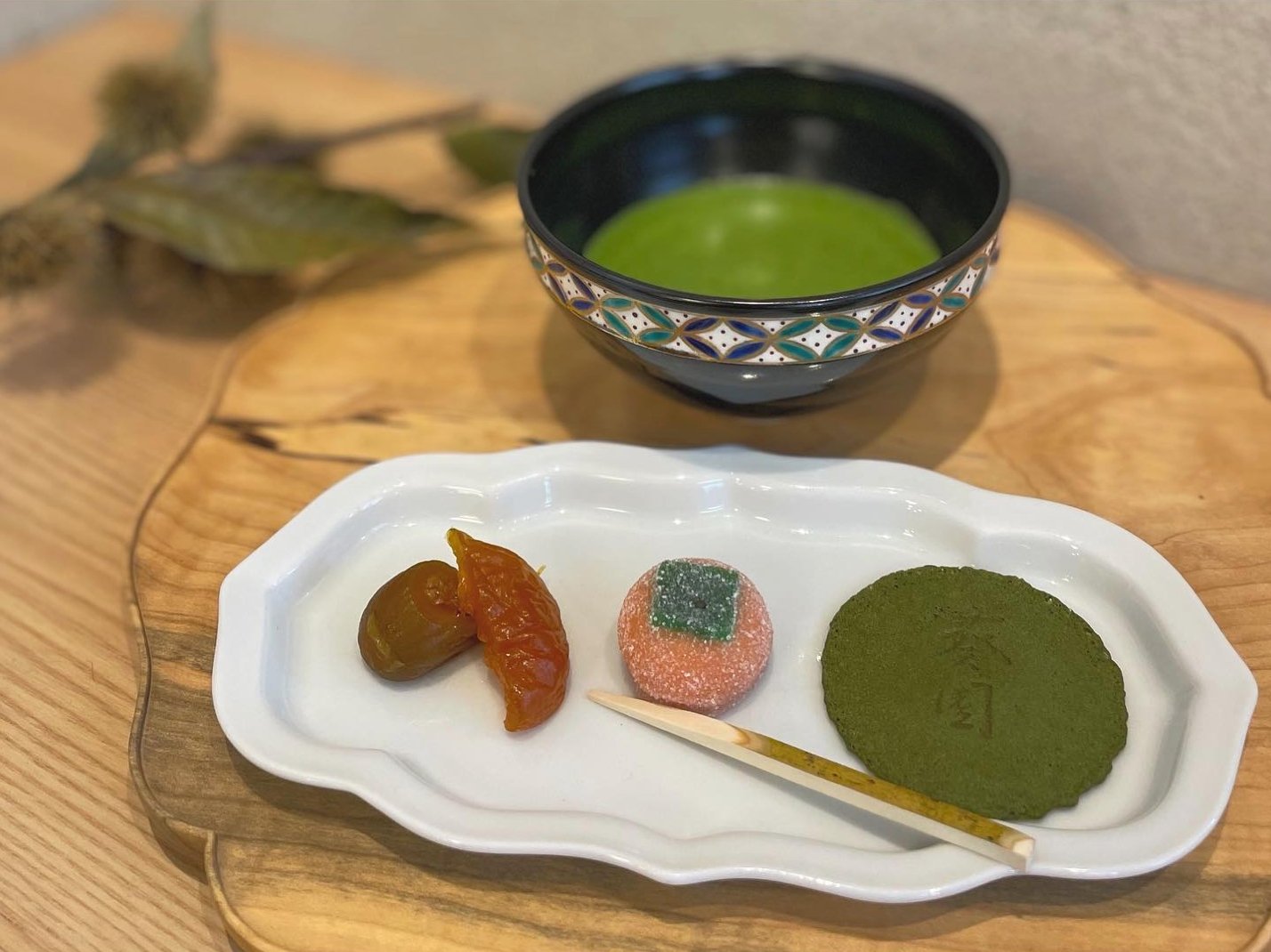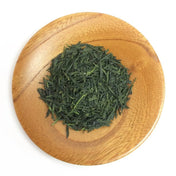Ohayo! Genki-desuka? (Good morning! How are you?) Can you believe it’s the end of October? As the temperatures drop, leaves change colors and we dance with falling leaves, I find that it’s a wonderful time to sit down, have a warm cup of tea and take a deep long breath…

While many of you may link October 31st as Halloween, an American holiday for treats, tricks, and costumes, it is more fundamentally the halfway point between the autumn equinox and the winter solstice. This astronomical holiday is marked in a variety of ways all over the world; in Japan, October 31st is celebrated as the Day of Japanese Tea.
Legend has it that on this day the famous monk Eisai brought the first tea seeds from China to Japan. At this time tea preparations were extremely bitter and used for medicinal purposes or to prevent drowsiness (e.g., during meditation practice). Japan's oldest book on tea, which includes methods of cultivation and use, "Tea Yoseiki" (Japanese:「喫茶養生記」) was also written by Eisai and is an important document on the history of tea. Monks and aristocrats at this time prepared tea by mixing hot water and powered tea leaves, which was similar to the contemporaneous Song dynasty in China. This type of preparation and its refined, focused culture seems to be the root of Japanese tea; specifically, tencha in Japan. Over the centuries, tea became more wide-spread and culture and preparation techniques further developed among the samurai and later amongs common people in Japan.
Japanese Tea Anniversaries
Upon further investigation, there seems to be other tea days promoted by different institutions to promote different types of Japanese tea. A few examples:
Day of Matcha is on February 6th and was established in 1992 by the Nishio Tea Trade Association to commemorate the 120th anniversary of Nishio Tea (i.e., Nishio, Aichi Prefecture is a region that is famous for their top quality matcha production). This day was chosen as "2" and "6" in Japanese can be pronounced together as "furo", which could signify a bathtub. However, in the Japanese tea ceremony, it actually refers to the fireplace area of a tea house that is utilised to boil water.
 Photo by AOI-Seicha.
Photo by AOI-Seicha.
Green Tea Day is on May 1st/2nd and marks the traditional opening of the spring tea season, when the first harvest of sincha are gathered. It is the 88th day from the first day of spring. While the day was officially recognized only in 1990, a traditional tea picking song indicates that celebrating the arrival of eighty-eighth night is much older.
Mugicha Day, on June 1st, coincides with the beginning of barley harvest season, which makes perfect sense since there’s nothing better than a mugicha made with fresh barely and fresh tea. Mugicha Day was first officially marked in 1986.
Genmaicha Day falls on November 1st, which again makes sense because that is also the beginning of the rice grain year (Japanese:米穀年度; beikokunendo), the year in which rice is traded in Japan.
In fact, some of you may be aware that there is another Japanese Tea Day that falls on October 1st. This is the day when the feudal lord Toyotomi Hidetoshi held the renowned tea ceremony called “Grand Kitano Tea Ceremony” at the Kitano Tenmangu in Kyoto in 1587. This tea ceremony was instrumental because it was open to all. That is, it was not exclusive to feudal lords, aristocrats and tea masters. If one was passionate about the tea ceremony, even common people and foreigners could participate. Because this ceremony marked the day when elevated tea culture became accessible to all, regardless of one’s status, this day is also know as Japanese Day of Tea.
You may be wondering why the Japanese tea days (both of them!) are in the fall. Because when we think of « shincha » (new tea), the harvest period falls between April and May so it may make more sense to celebrate this type of holiday in the spring. Yet, back in the days, autumn was the time to enjoy shincha. This is because tea back then would be harvested in the early summer time. Then, it was stored into a tsubo (relatively large sized pot for storing tea, and kept at low temperature until the fall). One may still come across these types of teas today, referred to as autumn shincha or mature tea (Japanese: 熟成新茶 jyukusei shincha).
Freshly harvested new tea has a fresh, young grass-like aroma, but by aging, the grassy smell is removed and the tea leaves mature into a rich, mellow tea. It is said that the shogunate Tokugawa Ieyasu especially liked this type of tea. So if you ever come across one of these “vintage” shinchas, remember that this was the new autumn tea loved by famous warlords!
Well, I guess there are many anniversaries to celebrate and to appreciate Japanese tea. As we gradually transition into the colder and darker winter months, I hope that you may take the time to enjoy a heart-warming cup of Japanese tea on this special day!

Why not celebrate both Halloween and Japanese tea!? We paired French Halloween treats (panna cotta eyeballs and a pumpkin-chestnut fluffy treat) with Uejima-san’s 3-year bancha. The arrangement is supposed to look like a spooky bear!
Featured image by Aoi Seicha in Nishio, Aichi Prefecture.
This article was updated on October 31st, 2023.


